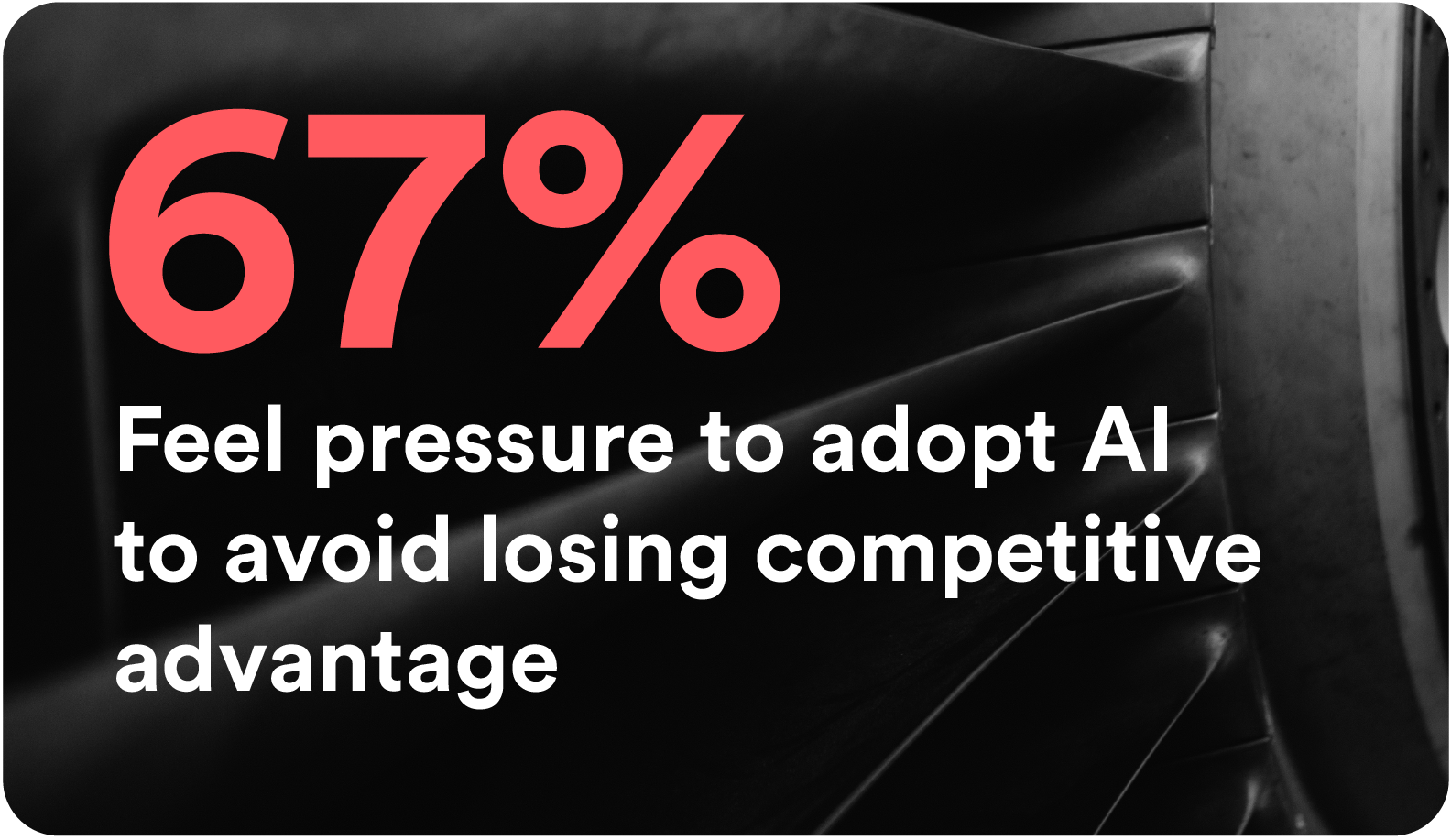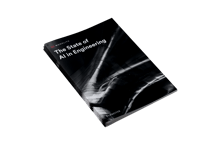AI has become a mainstream topic in product design and engineering. Monolith AI is helping all types of engineering companies to both understand how ready they are to realise the benefits, take those first steps to adoption and realise benefits at scale.
Here is our quick guide on understanding the attributes you need to be ready.
Realisation
The first step of any journey is realising you need to make it. The plan has to start somewhere, and it can either be a top down approach with an executive sponsor, or an AI champion emerging within an engineering team. Often the spark is lit by an external event such as customer demand for better products faster or the emergence of an agile competitor who is just doing things better than you are.
That AI improves engineering processes is widely acknowledged, visionary executives and AI champions are spreading the word. Bringing people along the journey becomes the critical task, engaging teams to deliver pathfinder or pilot proof cases builds confidence and integration into your mainstream process isn’t far away.
Data culture
The ability to learn is human nature and AI needs to learn too. Like people, AI learns from experiences in the form of data – and it is most likely you have enough data to train AI models from work you have done a moment ago all the way to work done 30 years ago (more on this in the next article of this series).
Treating data strategically, and treating it is an asset to drive value is key to organisational wide delivery of AI applications. Engineering AI applications enriched with data about cost, customer experience or manufacturability data will enable you to view your product development cycle in a new light and make better decisions earlier in your development cycle.
Adopting a Data Culture is a significant step, ideally taken at executive levels. Not having an enterprise wide data culture is not an excuse to delay the uptake of AI at a tactical level, a bottom up approach is equally valid. If all you have is CAD, Simulation or Test data, be bold and explore how AI can improve your process or design.
Closing the skills gap
Just as Data Science, Machine Learning and AI are something of a mystery to most Engineers (as is the difference in the names themselves). Engineering (and its acronyms such as CFD, FEA …) is a total mystery to most AI practitioners. The chasm is vast, and the costs of recruiting, training and change management can be overwhelming for organisations who want to train one to become the other.
Because Engineers have the skills, process, domain knowledge and creativity you trust to create your products, the most effective approach is to bring the benefits of AI to your engineers through a no-code solution such as MonolithAI which expresses AI in Engineering language. AI applications can be seamlessly integrated into your current engineering processes - where they can reduce the time, resource and number of repetitive cycles that are part of an engineer’s work, meaning you can get better products to market faster.
As your journey progresses you may later create a “Centre of Excellence” for AI specifically to serve the Engineering function, to identify opportunities in new areas and to enable collaboration internally and with your customers.
Strategy and tactics
To be successful, AI initiatives need to align with business imperatives, AI for AI’s sake, accompanied by rapid recruitment of AI programmers is a backwards step. Successful strategies start with understanding how AI can help tackle your challenges and bring opportunities to improve your engineering process. Align behind a purpose or goal and develop the strategy from there.
Successful strategies need to be supported by tactical prowess. Identify projects or processes for improvement and start small using AI to incrementally prove value. Like any journey you may need to make small diversions, identifying and crossing the barriers that could limit progress. Expand and educate as you see the evidence, people will come with you.
Knowing the value and having the confidence
To be ready organisations need to understand the value they seek and to have the confidence to go and get it. The value can be financial but doesn’t always have to be, there are many successful programs where AI has delivered cultural change or agility that has transformed the way that products are developed. These changes lead to financial value of course and a value statement, ideally the dimensions of the value statement should be wide reaching.
Confidence comes from communication and expectation management supported by evidence developed externally or internally. You need to be ready to be ambitious but not to over promise. Remember that AI needs data from the engineering organisation to learn, so instilling confidence in engineers should be high up on your plan to achieve value.
Summary
So now you can assess if you are ready, or if you have already started seeing the benefits of AI in engineering how you can improve. What’s your next step? Let us know.




